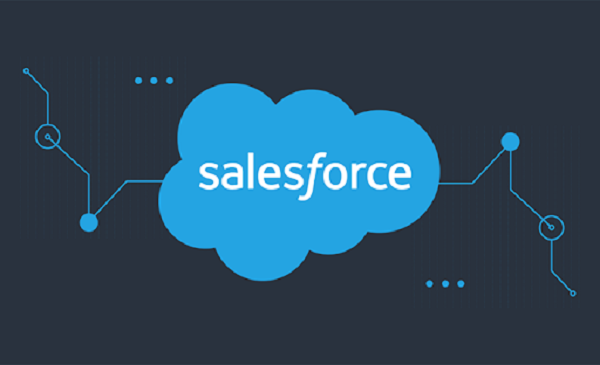In the IT industry, IoT (Internet of Things) is a very new and modern grooming technology. IoT means the internetworking of physical devices that are embedded with electronic instruments connected to the internet. These physical devices can fetch or exchange data from IoT objects. Salesforce IoT clouds let you integrate these devices with its system and to move a step ahead in the business development. IoT can help organizations to bring more value by gathering and processing continuous streams of all-side data from the customers’ devices which was not accessible earlier.
Salesforce is enriching the provided services using the potential of big data collected from connected devices and enable CRM users for building and customizing the apps to manage the data. Salesforce IoT cloud lets you store and process such data. Thunder, an event processing engine is powering the Salesforce IoT cloud. It is designed to capture, filter, and respond to events in real-time. Thunder has been built using the open-source tools ecommerce development company:
· Apache Kafka: A messaging system for handling a huge volume of reads
· Apache Storm: An event processing platform
· Apache Spark: A large-scale data processing framework
· Apache Cassandra: A distributed data management system
Salesforce IoT Cloud: Introduction
Salesforce IoT Cloud is helping the companies by routing the data generated from the connected devices into the Salesforce CRMs such as Salesforce Sales Cloud, Salesforce Services Cloud, Salesforce Marketing Cloud, etc. and the respective teams can act on it. The businesses can add meaningful business value to every connected device of Salesforce IoT.
read more: Major Challenges That Ecommerce Will Face In The Coming Years
Salesforce IoT Cloud allows you to improve everything from the product design to marketing strategy by collecting, analyzing, and sending real-time IoT data about product usage & customer behavior directly into the CRM system. A few examples of the devices are ride-sharing, home automation, electric cars, robots, and medical monitoring.
Benefits of the Salesforce IoT Cloud:
1. Know the customers using the devices:
Salesforce IoT Cloud doesn’t just connect the devices but it also connects the customers who are behind every connected device ecommerce development company. It can improve relationships with customers by delivering reliable performance, proactive support, and helpful new services.
2. More business value from the devices:
Salesforce IoT helps in improving customer experience in every aspect. It gives you real-time insights into customer behavior through IoT devices connected to Salesforce apps.
3. Better Profiles:
Understand the product behavior by creating device profiles on the customer content data in CRM and streaming data from connected devices.
4. Streaming Data:
Data accumulated from IoT devices will become more meaningful with context around how the device is used.
5. Context Data:
Get an overview of what is happening by mustering everything you know about the customers using IoT device data.
6. Input data from everywhere:
Using the Salesforce IoT Cloud’s RESTful API, you can import data from any source: from mobile apps, or complex data networks. Easily capture device activity, performance, location, user interactions, and more.
7. Data Tools:
Tools that can help you in aggregating and preparing data. Change the format of the data or filter, merge, and append data. It lets you perform any transformation with JSON, CSV, and TSV data formats.
8. Partner Connectors:
No hassle of data digestion with the help of partnership of platform with other IoT innovators such as AWS (Amazon Web Services), Cisco Systems, and other companies.
9. Create IoT rules with Clicks:
You can easily create and manage orchestration rules for any device state without becoming an expert coder ecommerce development company. You can easily build logic for any event or condition for triggering meaningful actions based on customer knowledge and real-time events.
10. Accessible to everyone:
No need for a programmer to test any business idea. Build, test, and iterate by just click not through code.
11. Visualize all your IoT devices in one place:
Check how your customers and devices are interacting in real-time. Monitor the orchestration status with Traffic View. It is a visual dashboard that shows the state of IoT devices concerning customer experience.
Features of Salesforce IoT Cloud:
1. Ingesting Sensor Data:
For meaningful insight, the first step is to accumulate the data. And for better customer analytics, you can’t just rely on only the data from connected devices but also on the location of the customer, order purchase history, case history, and other parameters.
There comes a feature in the Salesforce IoT cloud focusing on the customer context. This is an environment in which the customer can take action. It will streamline the processing, and gives better real-time responses. Both customer actions & context data will be stored and then used for deep data analysis & ML. Raw data is stored in a data lake while a big data warehouse can be used for collecting filtered and pre-processed data. Thunder enables the users to set filters for identifying relevant data from data streams.
2. Data Analytics:
There are billions of events that are ingested in the Salesforce IoT cloud every day. The data processing tools are an important architecture component to focus on IoT solution development.
Einstein Analytics – a popular business analytics software is used in data processing. It helps the CRM users to uncover insights from huge sets of data just not only the sensor data but also include ERP records, website logs, etc. CRM users can get an overview of how the products & services are being used.
Einstein Analytics is highly optimized for tablets, phones, and even watches. It will let users build and customize their analytics apps using pre-built dashboard components.
3. Integration with Enterprise Applications:
You can use the Salesforce IoT cloud as a standalone service for storing data and its processing. However, it also comes with connectors for integrating it with other Salesforce products or 3rd party systems. These integrations will help in a stable flow of relevant data from different sources and multi-purpose corporate systems. This data can be utilized by Einstein Analytics for giving all-round reports and making meaningful conclusions from all the available information.
4. Connecting data to customer experience:
The data from the IoT devices of customers will help in managing them efficiently. By using a rule-based approach, control apps can send service notifications. The sensors will identify the actual status of the product, comparison of these values to those which are stored in the actual database of the app is acceptable, and notify in advance that the product will require servicing. Using the ML-based controlling, the IoT device’s data from the customers’ connected things will be used time-to-time for updating an IoT system.
5. New prices discovering and business models:
The analysis and gathering of data from IoT devices will help in knowing how the customers are using the products or services and how effective they are. Using this data ecommerce development company, the companies can identify opportunities for optimizing the current business operations such as in marketing, logistics, etc, offer new and cost-benefit models.
Salesforce IoT Cloud: Features Overview
· Spark, Cassandra, Kafka, Storm under the hood
· Orchestration
· Enterprise apps integration
· Text message notifications for actions
· Einstein Analytics
· Sensor data & focus on customer context
Solutions for Certain Problems By Salesforce IoT Cloud:
1. Treating Customers as Numbers:
It is a general problem of customers that whenever they try to reach customer support of companies, they get a quite cold approach from the agents which makes them feel less than a human being ecommerce development company. By building strong relationships with customers through warmer, proactive support, extra helpful services will correct the malady of how businesses conduct business today.
2. Deficiency of data tools:
It has been a wish of many that the software solution will even allow exporting the data to a CSV format. Salesforce IoT cloud not only allows this but also let filter, merge, and append data. You can even change the entire format from JSON, CSV, to TSV data format.
3. Limited Coding Skills:
Not everyone is a coding enthusiast. With Salesforce IoT Cloud, it is possible to check the business ideas without learning coding skills. Rapidly build, test, and iterate by clicks, not by code.
Wrapping Up:
In this article, we have understood a lot of things about the Salesforce IoT cloud, its meaning, benefits, problems it resolves, features, etc. Salesforce IoT cloud is a great software to implement with your existing systems. At Emizentech, the best ecommerce development company in India, we are having expertise in implementing the Salesforce IoT cloud into your existing CRM, Websites, and other software. Let us know your requirements.





